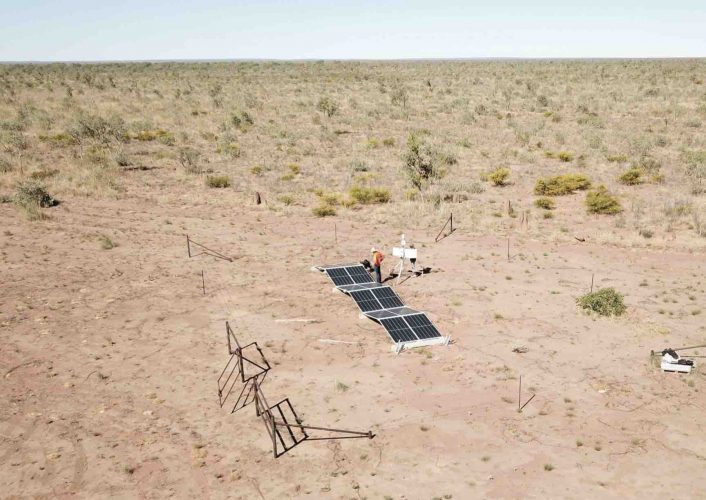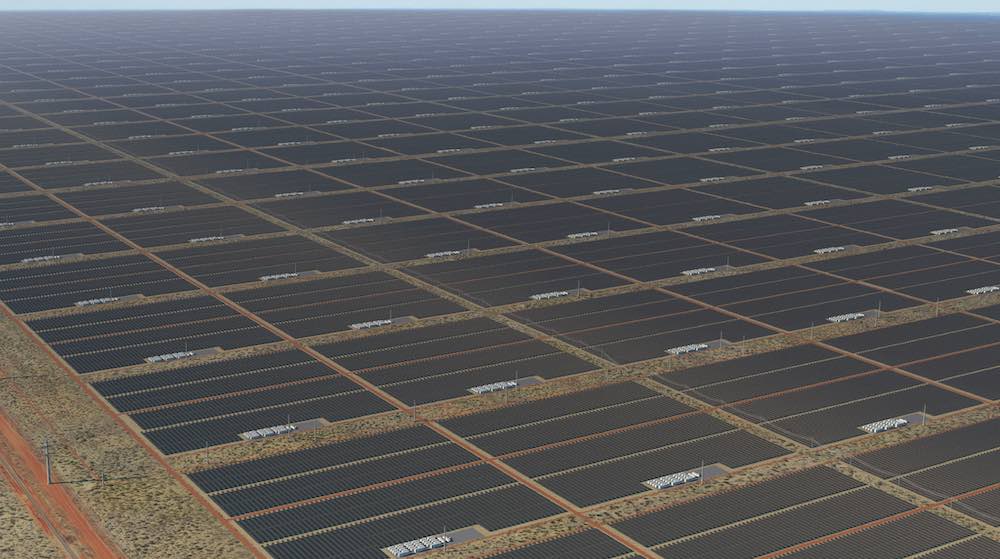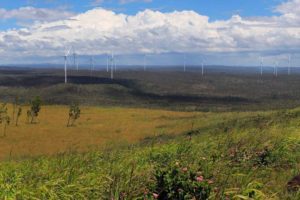Sun Cable, the venture backed by billionaires Mike Cannon-Brookes and Andrew Forrest, has revealed the staggering scale of its proposed solar and battery project – the biggest of its type in the world – as it lodges its environmental impact statements.
The project envisages up to 20GW of large-scale solar deployment at Powell Creek, north of the township of Tennant Creek in the Northern Territory, supported by up to 42GWh of battery storage.
There will also be a new 6.4GW transmission line running at up to 600kV for the 800kms trip to Darwin, which will run along the corridor of the main north-south railway line, and a solar factory in the Darwin region.
The plan is to provide power to Singapore via a 4,200km sub-sea cable, but also to boost the local manufacturing industry to mop up the surplus of low-cost solar power that will be delivered into Darwin.
The plan also involves converter stations near both Darwin and Singapore, and battery storage facilities in Darwin.
A work camp housing 1,100 people will be built at Powell Creek for the four-year construction period, shrinking to 100-200 people during operation. The site is about 30km west of the main highway.
The Sun Cable document says the project will reduce global greenhouse gas emissions by 480 million tonnes, equivalent to the average electricity used by over 2.5 million Australian homes each year over the project lifespan.
It will also create 1,750 construction jobs in the Northern Territory, and 350 long-term operational jobs in the Northern Territory

“The Solar Precinct will occupy approximately 12,000 ha of land, with an additional 269 ha for two access roads to the Stuart Highway, and an airstrip,” the document says.
“The Solar Precinct will have a peak generation capacity of approximately 17-20GW, and will comprise multiple large-scale solar and storage fields of modular photovoltaic (PV) solar arrays and battery storage.
“Key components include solar arrays, medium and high voltage transmission lines for internal reticulation, distributed Battery Energy Storage Systems (BESS), Voltage Source Converters (VSCs) and associated electrical infrastructure including, but not limited to, transformers, inverters and a switch yard.”
Sun Cable says it hopes to begin construction of the solar precinct in early 2024. It envisages the project will have a life span of 70 years, although the solar component may need to be replaced or repowered after 40 years, and the battery component after 15 years.
“The renewable energy generated by the AAPowerLink has potential to drive economic development in the NT, by providing a significant source of low-cost electricity,” the report says.
“The type and scale of development that could occur is difficult to predict, but it is reasonably foreseeable that mining and manufacturing-based industries could be made more feasible by having access to this resource.”
The report says that the highest rated residual negative impacts identified in the EIS are the introduction and spread of weeds due to land clearing, and the potential impact to threatened species at the Darwin converter site and along the overhead transmission corridor.
Sun Cable says it is working on plans to mitigate these impacts and potential impacts on the seasonal swamp south-west of the Darwin Converter Site, which it says is a locally important habitat and has value to Aboriginal people.
It notes that changes to groundwater levels due to groundwater extraction could occur at the solar precinct during construction, and says it will hire a hydrogeologist to determine bore locations and sustainable rates of extraction.
Forrest’s Squadron Energy, which recently poured more money into the venture, along with Cannon-Brookes’ Grok Ventures, said in a LinkedIn posts that the EIS was important milestone for the project and its commitment to managing the environmental, social, cultural and economic impacts.










